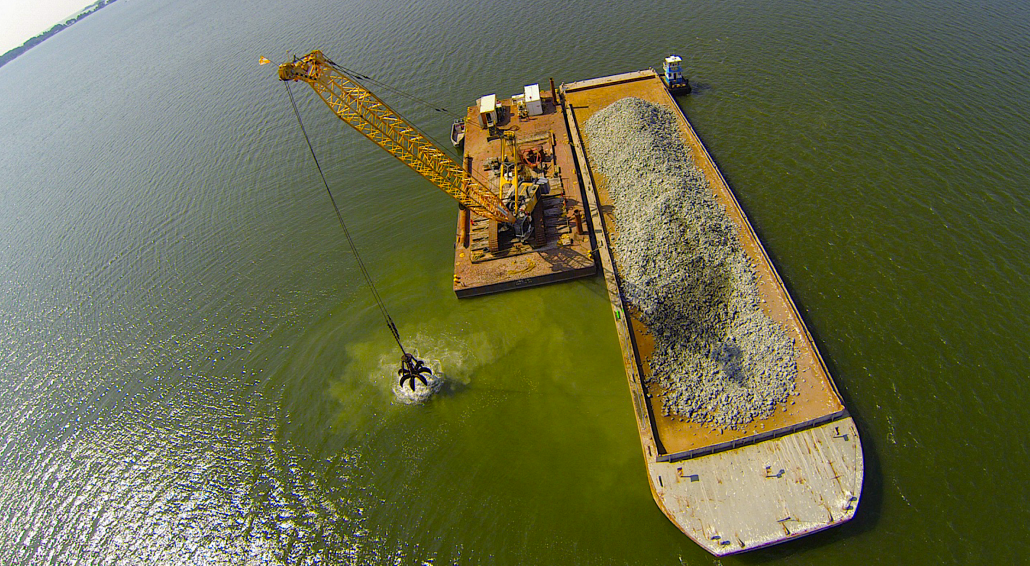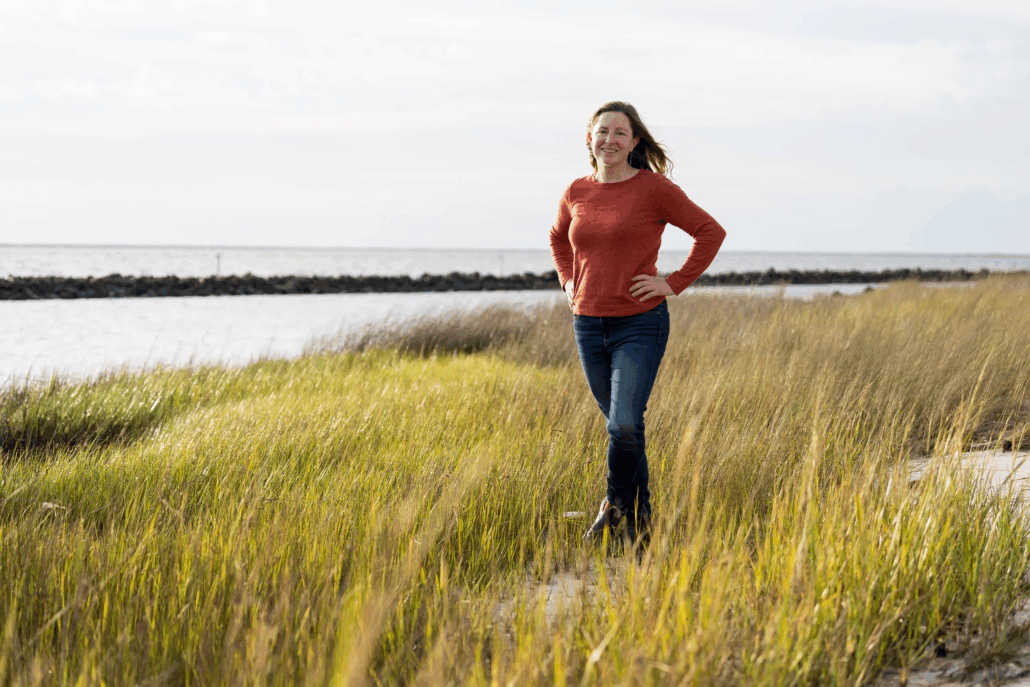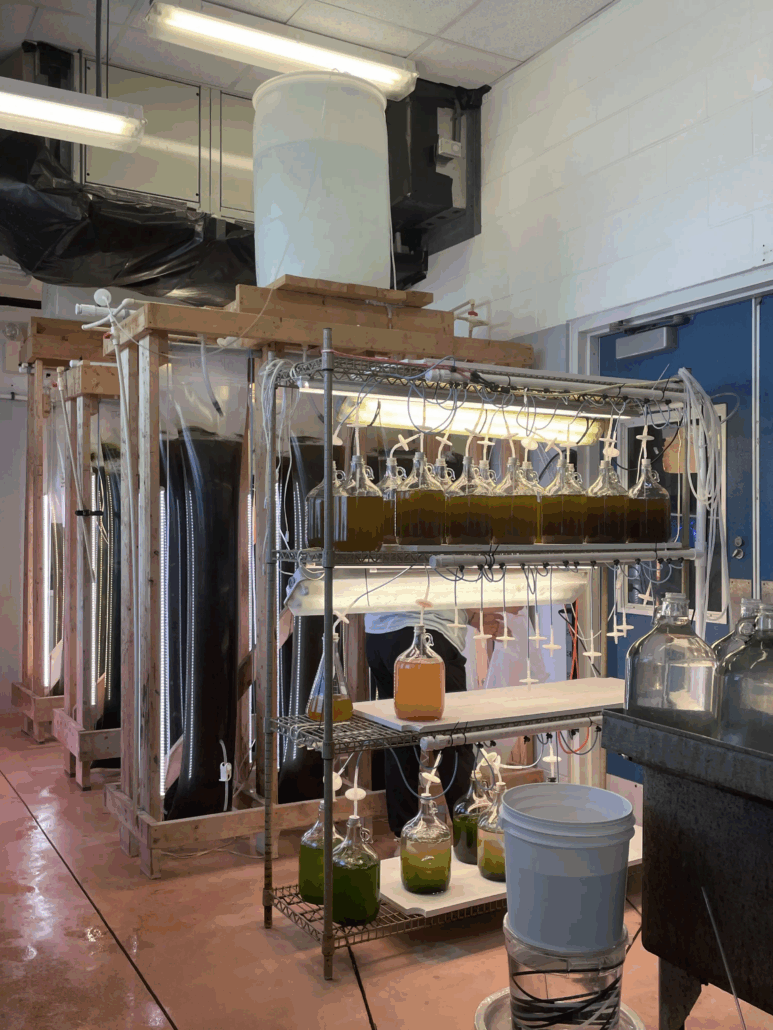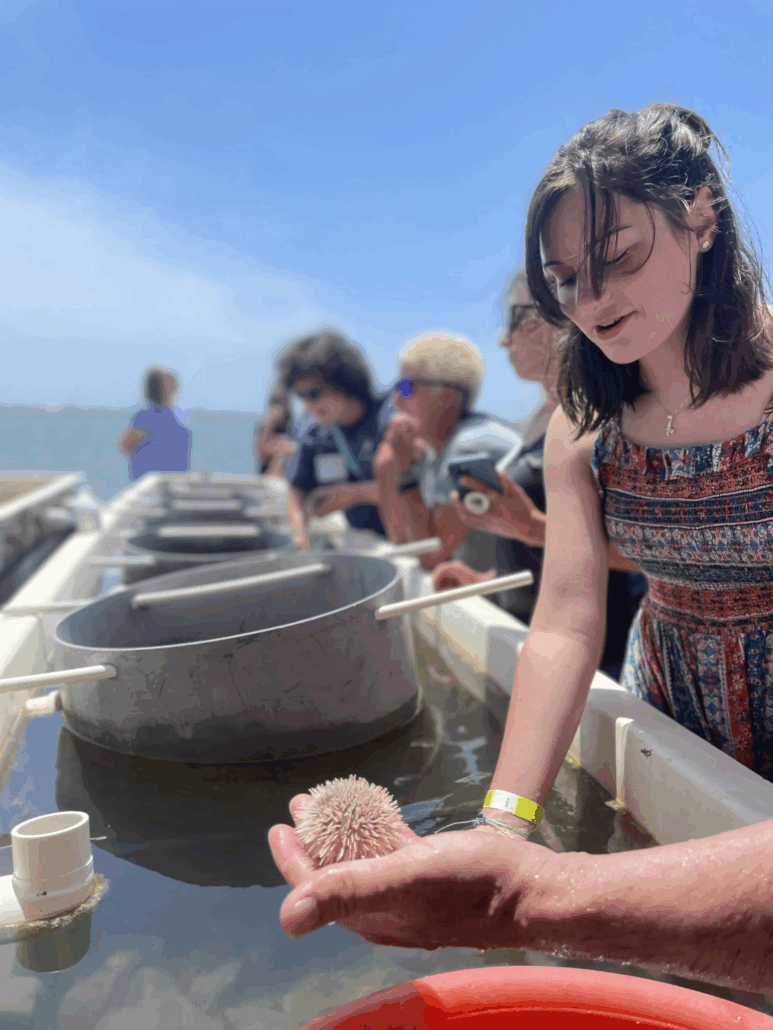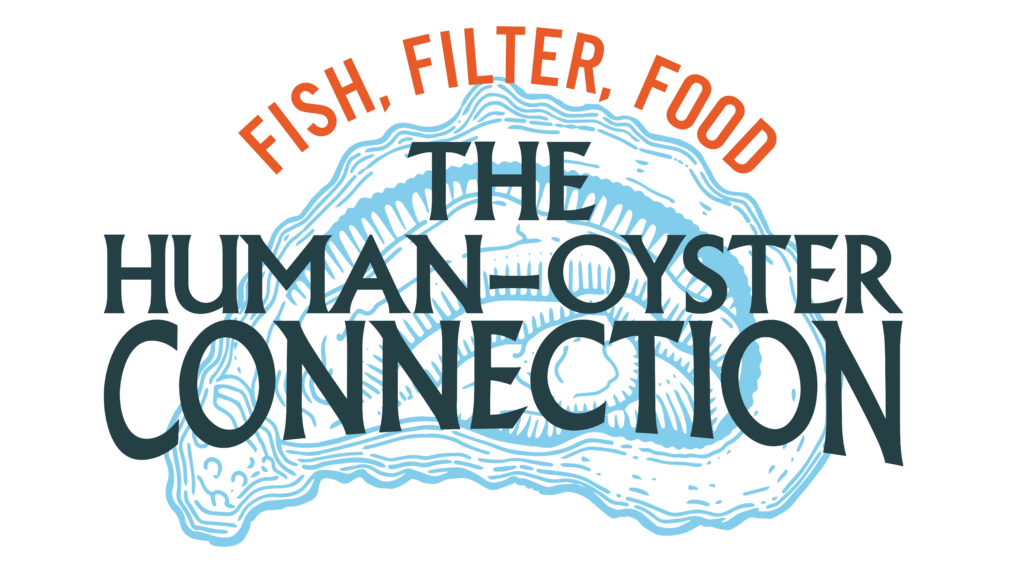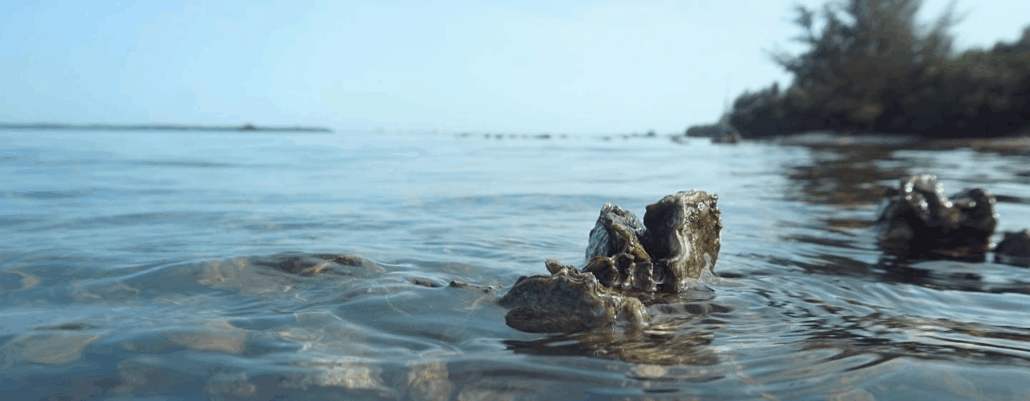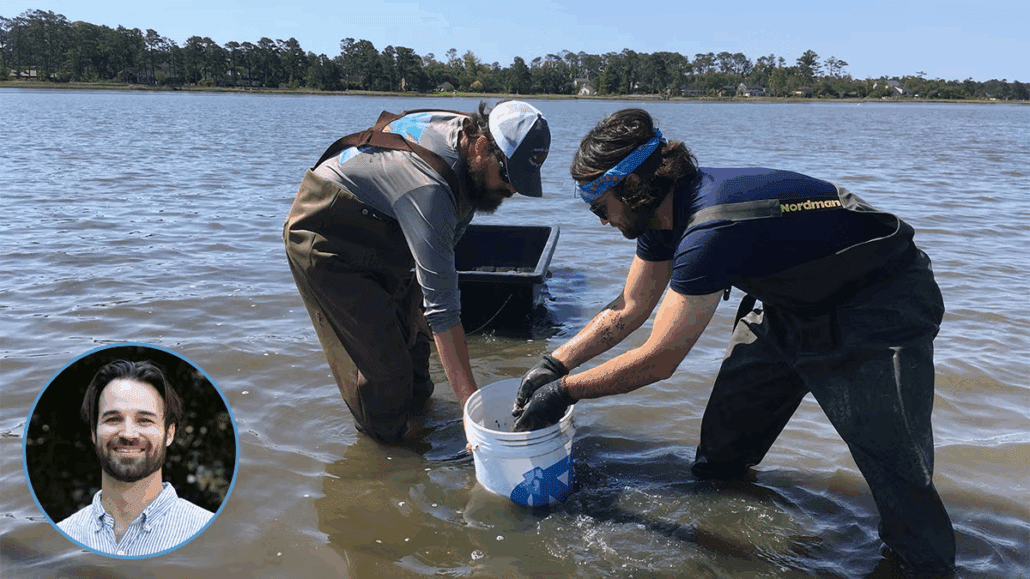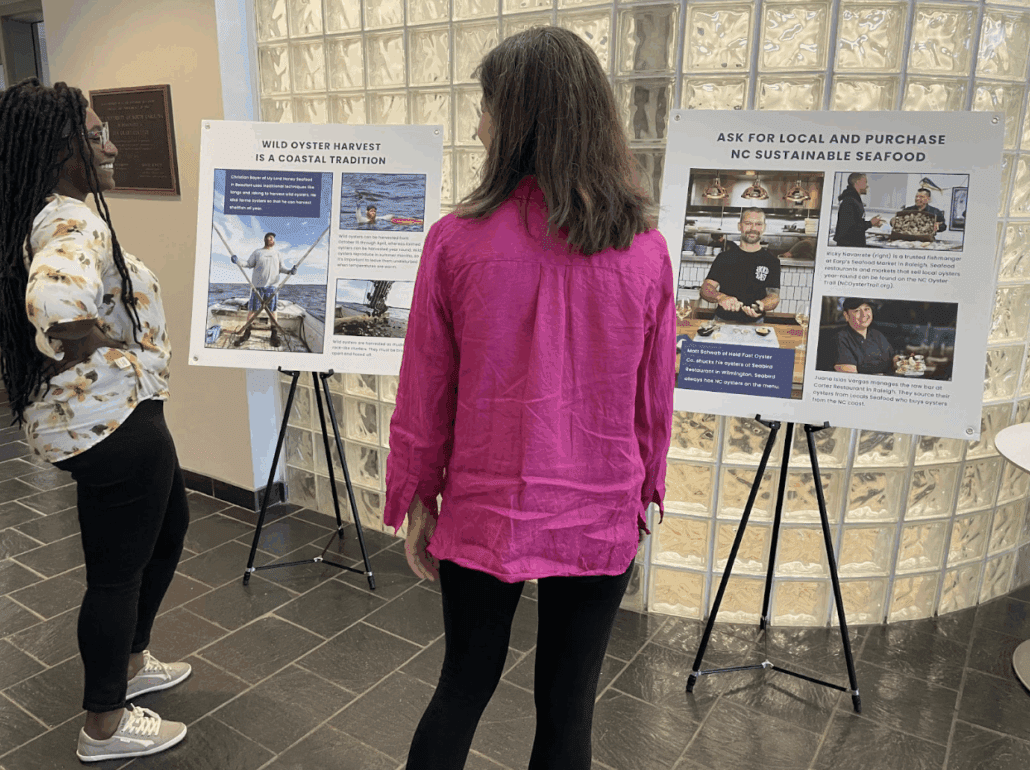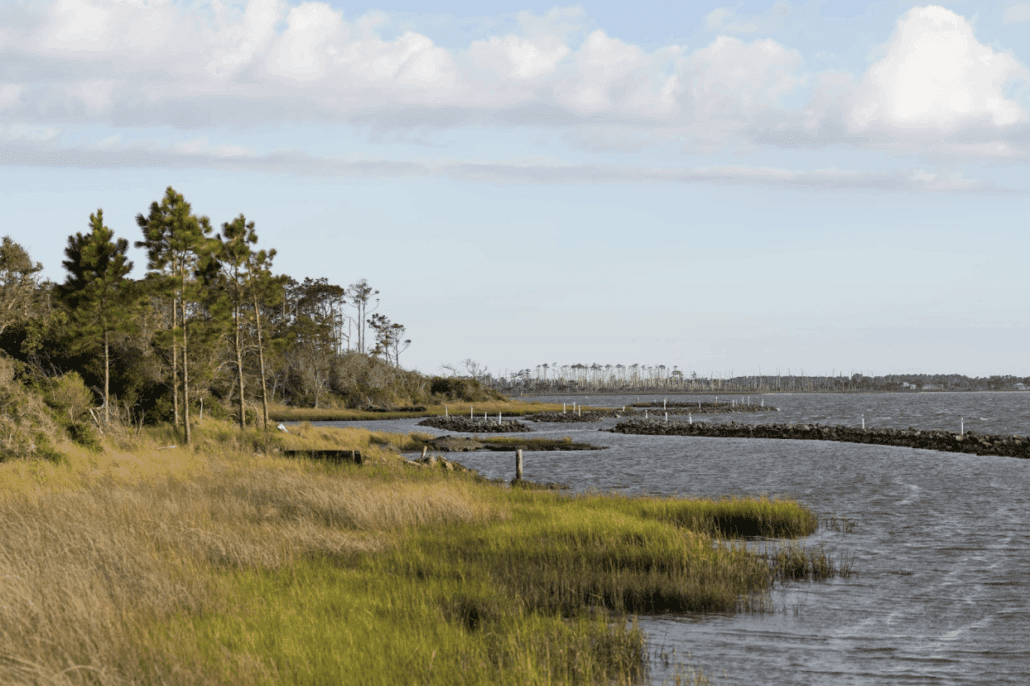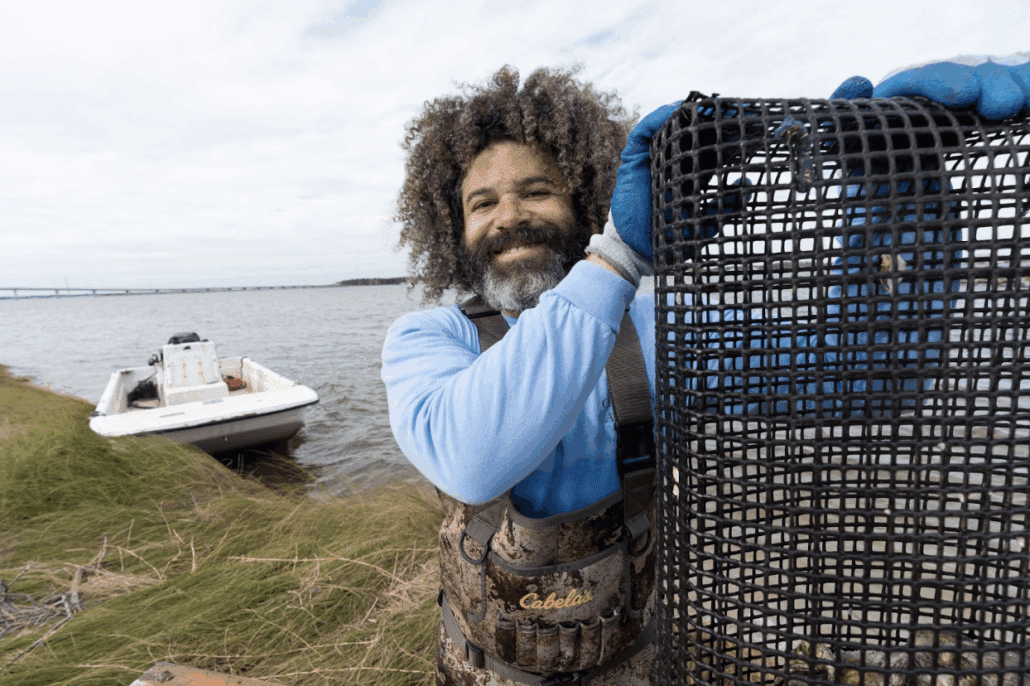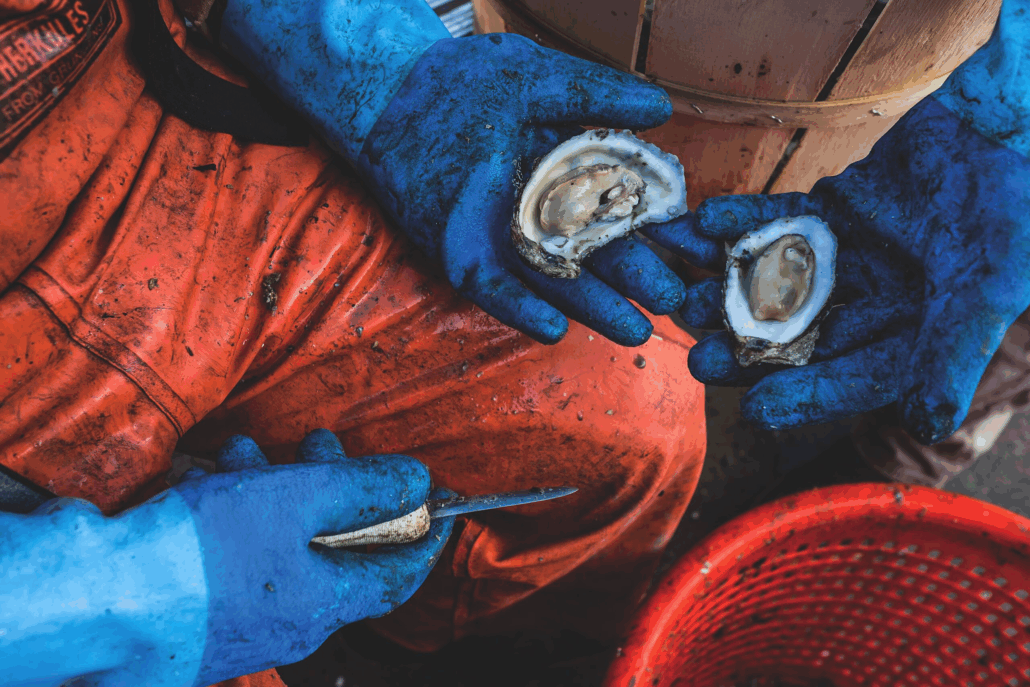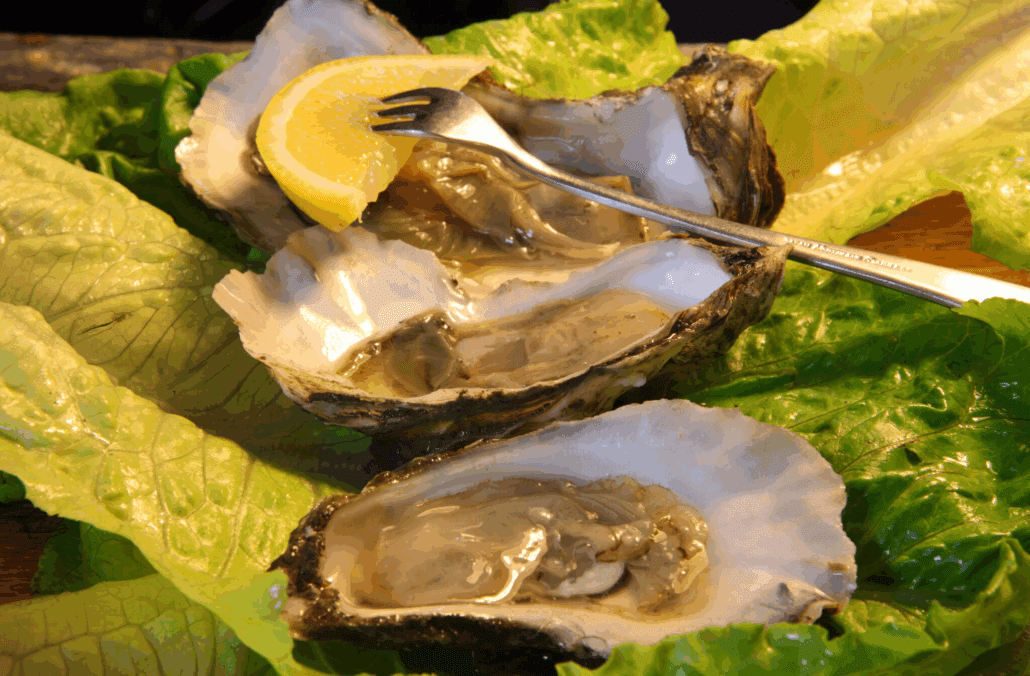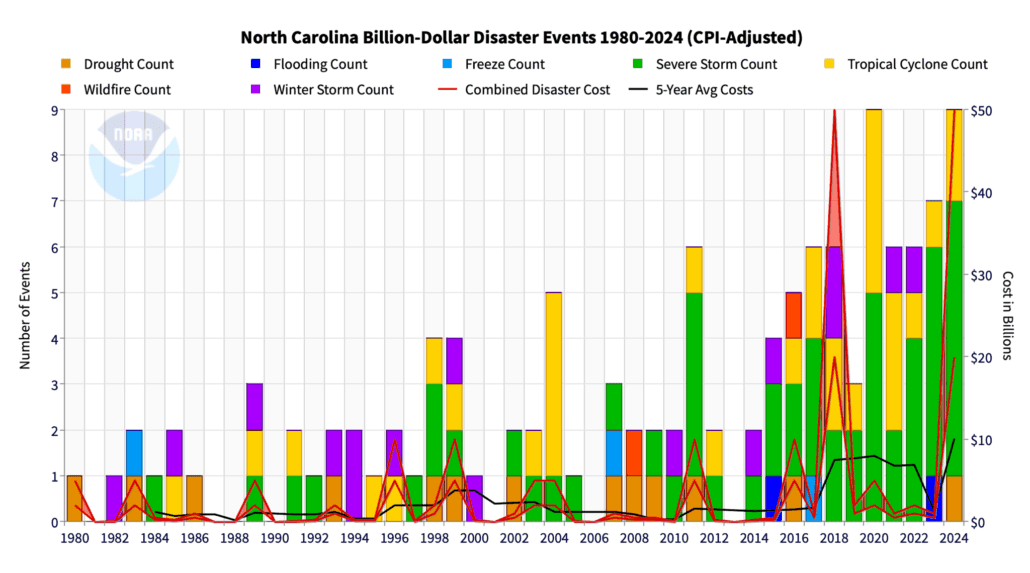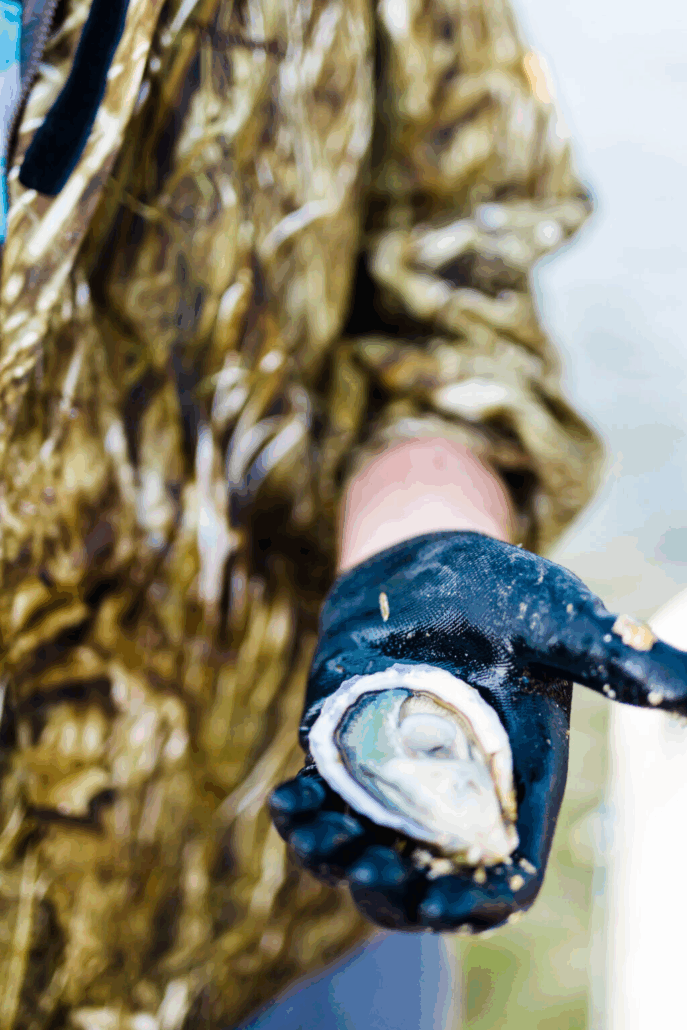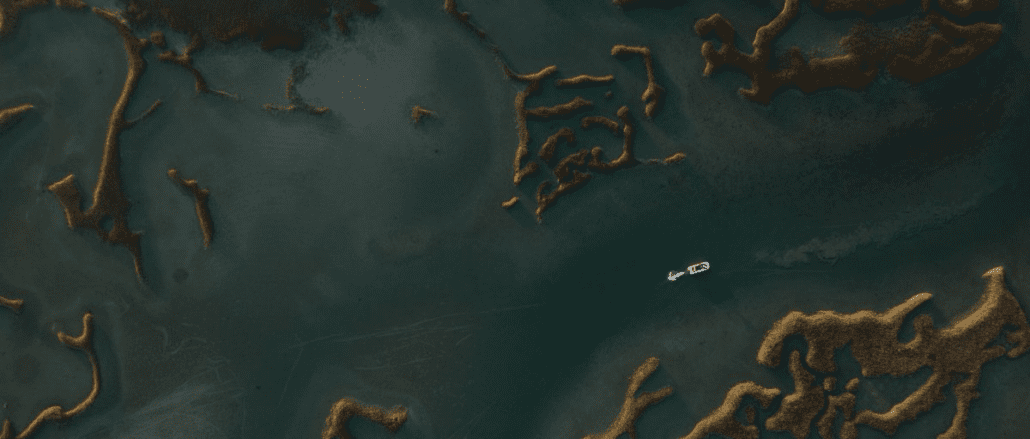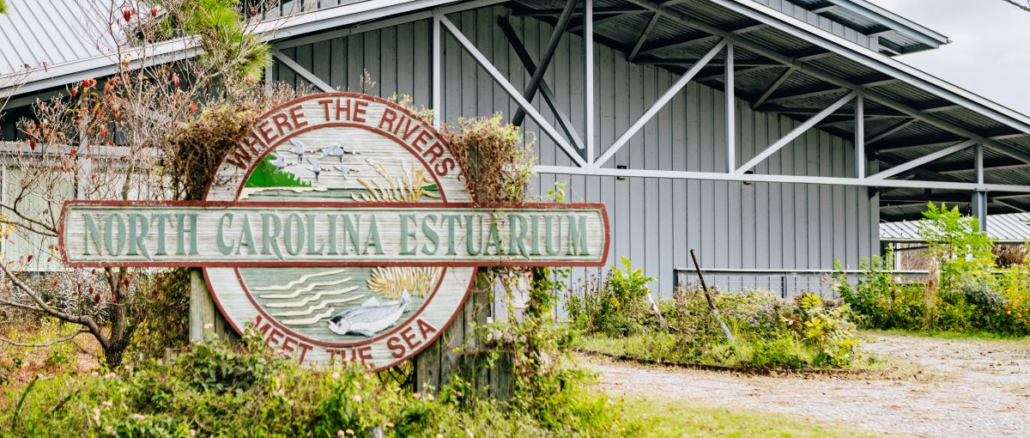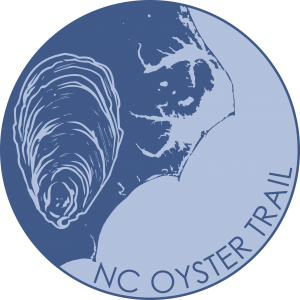By Rebecca Jones on September 25, 2025 | Reprinted from NC Sea Grant
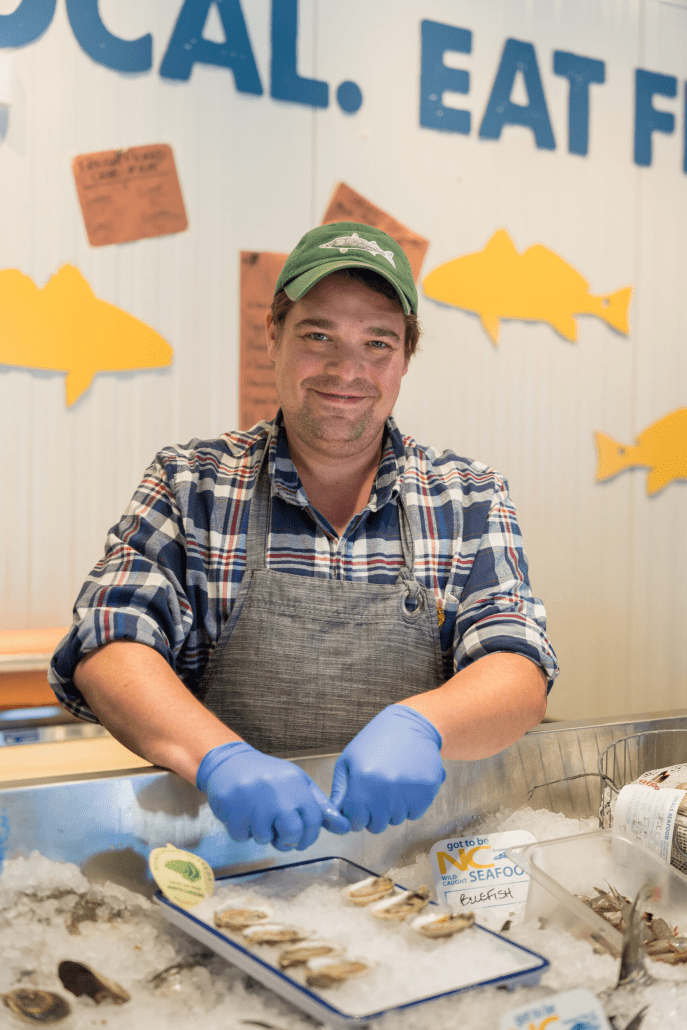
Locals Seafood at Durham Food Hall is participating in NC Oyster Month. They are selling 1/2 off roasted oysters on Mondays and $2 shucked raw oysters on Wednesdays all through October.
Credit: Justin Kase Conder © 2024 Justin Kase Conder Usage with express permission only.
FOR IMMEDIATE RELEASE
Contact: Jane Harrison, jane_harrison@ncsu.edu, 919-513-0122

Get ready to “shellebrate” as North Carolina Oyster Month returns this October for its third anniversary, bringing a variety of fun and flavorful events across the state. From oyster farm tours to seafood festivals, there’s no shortage of ways to savor local oysters while supporting coastal conservation.
It’s time to raise a shell—NC Oyster Month is back! Throughout October, communities across North Carolina will celebrate our favorite bivalves with oyster roasts, seafood festivals, chef specials, farm tours, and more. Whether you like them raw, roasted, or fried, there’s no better time to enjoy N.C. oysters while learning about their role in our coastal culture.
North Carolina Sea Grant’s coastal economist specialist Jane Harrison says, “My favorite events are hosted by restaurants featured on the NC Oyster Trail. For example St. Roch’s Fine Oysters Bar is hosting a special N.C. oyster dinner on Wednesday, September 15th. All diners will receive shellfish swag to take home in addition to happy bellies.”
But NC Oyster Month is about more than just what’s on the plate. Every oyster tells a bigger story—one of healthy waters, working waterfronts, and traditions that connect generations. Wild oysters protect our shorelines and provide homes for marine life, while farmed oysters support local businesses and bring fresh, distinct flavors to tables across the state. Together, they sustain our coast both ecologically and economically.
“Some of my favorite educational NC Oyster Month activities are the North Carolina Seafood Festival in Morehead City on October 4 and 5, Ocracoke Working Watermen’s Festival on October 11, and the Outer Banks Seafood Festival on October 18,” suggests Harrison.
This statewide celebration is organized by North Carolina Sea Grant, the North Carolina Coastal Federation, and the N.C. Department of Natural and Cultural Resources, in partnership with the NC Oyster Trail. With events stretching from the coast to the Triangle, NC Oyster Month is your chance to discover how oysters enrich our environment, our communities, and our cuisine.
For more information on North Carolina Oyster Month 2025 and to explore the NC Oyster Trail, visit ncoystertrail.org. You can also read stories about oyster conservation and the people behind the industry in North Carolina Sea Grant’s Coastwatch magazine.
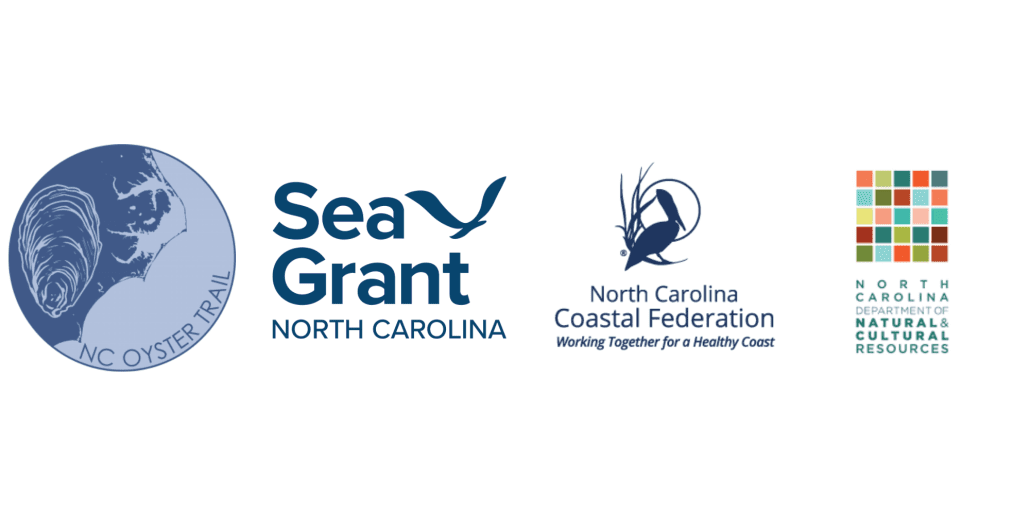
NC Oyster Month Events
North Carolina Seafood Festival
Oct. 3-5 | Morehead City
Celebrate the bounty of our coast at the North Carolina Seafood Festival in downtown Morehead City. Enjoy local seafood, entertainment, and activities that highlight North Carolina’s working waterfronts and fishing heritage. Visit the NC Oyster Trail educational booth in the chef’s tent where cooking demonstrations take place every hour.
A Gilded Oyster Celebration
Oct. 4 | 10am–6pm | Empty Nest Studio & Gallery, Frisco
Celebrate the Harvest Moon with oysters, bubbly, and local art at Empty Nest Studio & Gallery. Enjoy a unique oyster jewelry sale alongside refreshments as the gallery welcomes the fall season.
2nd Annual Oyster Roast for the Coast
Oct. 4 | 5-8pm | Surf City Brewing Company, Hampstead
Celebrate conservation of The Point—now the South Topsail Preserve—at this community gathering hosted by Conserve The Point–Topsail. Enjoy local oysters, Surf City Brewing craft beer, live music from Doug McFarland, and a photography showcase by Gavin Stanton Shwala. The traveling Oyster Photo Exhibit will also be on display, sharing stories of North Carolina’s oyster heritage and industry. Tickets are $50, with proceeds supporting conservation and education programs. Register by Sept. 26.
Growing the Future of Shellfish
Oct. 4 | 10am-2pm | UNCW Center for Marine Science, Wilmington
The UNCW Center for Marine Science invites the public to tour their facilities each fall at their open house. Discover how research at UNCW’s shellfish research hatchery helps to grow NC’s shellfish aquaculture industry. You will learn about the Eastern oyster’s life cycle, selective breeding of shellfish, microalgal culture, and how to avoid death and disease in cultivation. Super educational!
Ocracoke Working Watermen’s Festival
Oct. 11 | 10am–7pm | Ocracoke Community Square Docks, Ocracoke Island
Celebrate Ocracoke’s maritime heritage at the Working Watermen’s Festival. This community gathering features working watermen’s displays, local decoy carvers, N.C. oyster farmers shucking and roasting oysters, guest chef Walker Sullivan cooking seafood, and live music. Hosted by the Ocracoke Working Watermen’s Association, the festival highlights the island’s fishing traditions and community spirit.
24th Annual Oink & Oyster Roast
Oct. 11 | 12–4pm | Pigman’s Bar-B-Que, Kill Devil Hills
Join the Rotary Clubs of the Outer Banks for the 24th Annual Oink & Oyster Roast. Feast on all-you-can-eat Pigman’s Bar-B-Que smoked pork, roasted oysters, sides, and all the fixings, plus one drink ticket.
AYCE Oyster Roast & Craft Beer at Shuckin’ Shack
Oct. 12 | 12-3pm | Shuckin’ Shack, Surf City
Join Shuckin’ Shack for an all-you-can-eat oyster roast paired with three tokens for local craft beers (21+). Tickets are $75, sold in advance only—call 910-803-2037 and ask for Carin. Live island music by Ike Kanakanui from Key West will fill the tented parking lot. Rain or shine, no refunds—bring a chair and settle in!
New River Roundtable: Oyster Highway Update
Oct. 15 | 2–4pm | Sturgeon City Environmental Education Center, Jacksonville
Join the New River Roundtable and the City of Jacksonville for an Oyster Highway update. Learn about the latest reef projects through mock-up exhibits, maps, and photos. This event offers a closer look at ongoing efforts to restore and protect local oyster habitat.
Special Oyster Dinner at St. Roch
Oct. 15 | 5-9pm | St. Roch Fine Oysters Bar, Raleigh
To kick off the start of wild oyster season, St. Roch will host a special oyster dinner highlighting North Carolina oysters. The NC Oyster Trail will be on site with shellfish swag and facts. You can make a reservation at resy.com starting on Sept. 30. St. Roch has been named one of the best oysters bars in the country by Esquire magazine and Tasting Table. Book your reservations as soon as you can!
Outer Banks Seafood Festival
Oct. 18 | Nags Head
Celebrate coastal traditions and seafood heritage at the Outer Banks Seafood Festival. The NC Oyster Trail will have an informational booth in the Education Tent. Stop by for some shellfish swag!
Shuck & Shag
Oct. 18 | 6:30-10:30PM | Sunny Side Oyster Bar, Williamston
Sunny Side Oyster Bar will host a Shuck & Shag–dance to music by a local DJ and enjoy great food, friendships, and fun! This is a smaller event leading up to their annual Shuck & Shag on February 7th. Please save the date and look for updates on their Facebook Page. No admission.
NC Oyster Festival
Oct. 18-19 | Ocean Isle Beach
Join us for the 44th Annual North Carolina Oyster Festival, a coastal tradition since 1978! Home to the only sanctioned oyster shucking contest in the state, the festival has proudly sent many talented shuckers on to national competitions. There will also be an oyster eating and stew contest. Not to miss!
Oysterberfest
Oct. 26 | 12-6pm | Wrightsville Beach Brewery, Wrightsville Beach
Celebrate the beginning of wild oyster season with your favorite local brews! Wrightsville Beach Brewery hosts this annual oyster roast featuring N.C. wild and farmed oysters. Music will be provided by Back Pocket Buddha and Birdwell Beat.
Violet Hour Oyster Tour Giveaway via Hold Fast Oyster Co.
Oct. 1–31 | Online
Win a free Violet Hour oyster farm tour on a boat for you and up to six guests! To enter, follow Hold Fast Oyster Co.’s on Instagram (@holdfastoysterco) and tag your friends in the comments of any post—the more people you tag, the more entries you earn. Giveaway runs all October, with a winner announced by mid-November. Hold Fast Oyster Co.’s farm tour leaves from Sneads Ferry Monday–Friday from 4–5:30 PM – an unforgettable coastal experience.
Locals Seafood Oyster Specials
Mondays & Wednesdays | Locals Seafood, Durham Food Hall
Head to Locals Seafood for weekly oyster specials highlighting the best of North Carolina’s coast. On Mondays, enjoy ½ off roasted N.C. oysters, and on Wednesdays, savor raw N.C. oysters for just $2 each. Fresh, local, and delicious!
Elijah’s Oyster Flights
All October | Elijah’s Oyster & Fish Camp, Wilmington
Celebrate Oyster Month at Elijah’s with rotating flights of local oysters from North Carolina’s top farms, including Ghost Fleet, Crystal Coast, Holdfast, Middle Sound, Three Little Spats, Little Star, Morris Family, Falling Tide, Seaview Crab Co., and Seaside Oyster Company. Enjoy a flight of 6 oysters for $18 or 12 for $36. With selections changing based on availability, there’s always a local option waiting to be discovered.
Stubborn Mule Oyster Month Celebration
Date TBD (likely 2nd weekend of October) | Stubborn Mule Oyster Bar & Grill, Washington
Join the Stubborn Mule for a big Oyster Month celebration with live music, farm-raised oysters, and a chance to meet farmer Chad Caraway of Caraway Oyster Company—grower of Half Naked Pirates oysters from Topsail Beach. This pro-NC seafood event will feature oysters from across the coast in a lively community gathering.
Seabird Oyster Happy Hour
Mondays | 5–6pm | Seabird Restaurant, Wilmington
Start your week with $1 N.C. oysters at Seabird’s Monday Happy Hour. Featuring Seabirdies, farmed exclusively for Seabird by Holdfast Oyster Co., these oysters are freshly shucked and served at the bar. A weekly tradition celebrating North Carolina’s oyster heritage.
NC Oyster Happy Hour
Monday-Thursdays | 4-7pm | Shuckin’ Shack, Wilmington
Don’t miss this great deal! Local N.C. oysters: $1.25 raw or $1.75 chargrilled. Why not order $1.50 wings while you’re at it?
$1.50 Oysters Every Sunday
Every Sunday in October | Coquina Fishbar, Wilmington
Sundays are made for oysters at Coquina Fishbar! Enjoy N.C. oysters for just $1.50 each—available by the half or whole dozen—all day long.
Coquina’s Oyster of the Week
Weekly in October | Coquina Fishbar, Wilmington
All October long, Coquina Fishbar is serving a new chef-created oyster special each week. Stop by to experience innovative preparations that highlight the versatility of N.C. oysters.
Nov. 1 | Ocean Fest, Surf City
Ocean Fest is where live music, art, and surf culture meet to unite to benefit Mother Earth. Oysterpalooza at Ocean Fest is an annual ticketed charity event with top regional music talents, the best local oyster purveyors, beer & wine, food trucks, and more. There are only 750 tickets up for grabs, so be sure to secure yours soon!
1st Annual NC Oyster & Seafood Celebration
Nov. 4-5 | Seabird Restaurant, Wilmington
Local seafood advocate & chef Dean Neff hosts Seabird’s 1st annual NC oyster & seafood celebration. Learn from the best – meet oyster sommelier Julie Qiu, as well as oyster farmers and foragers. The event will show off the state’s incredible cultivated and wild oysters. Reservations live via OpenTable September 29th!

